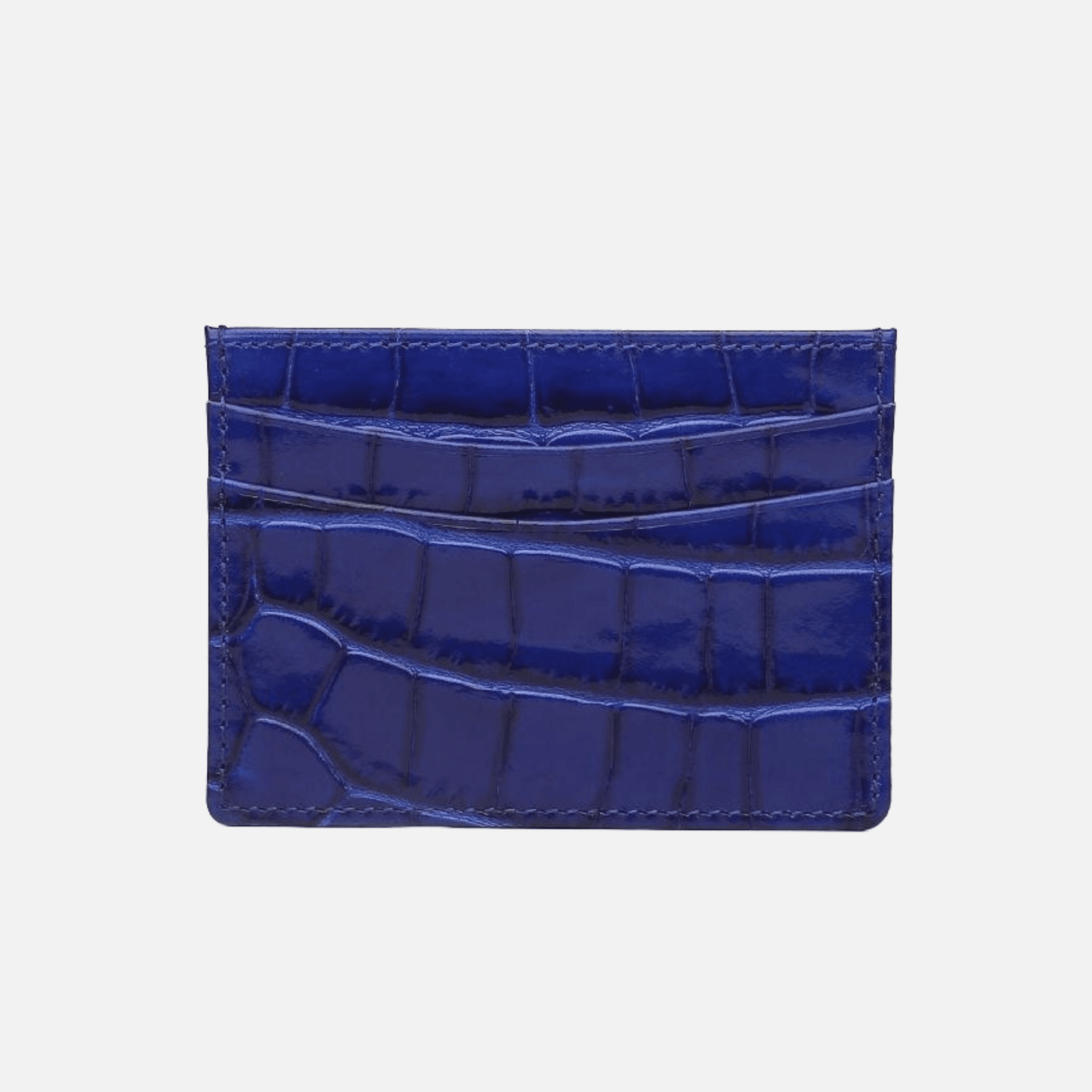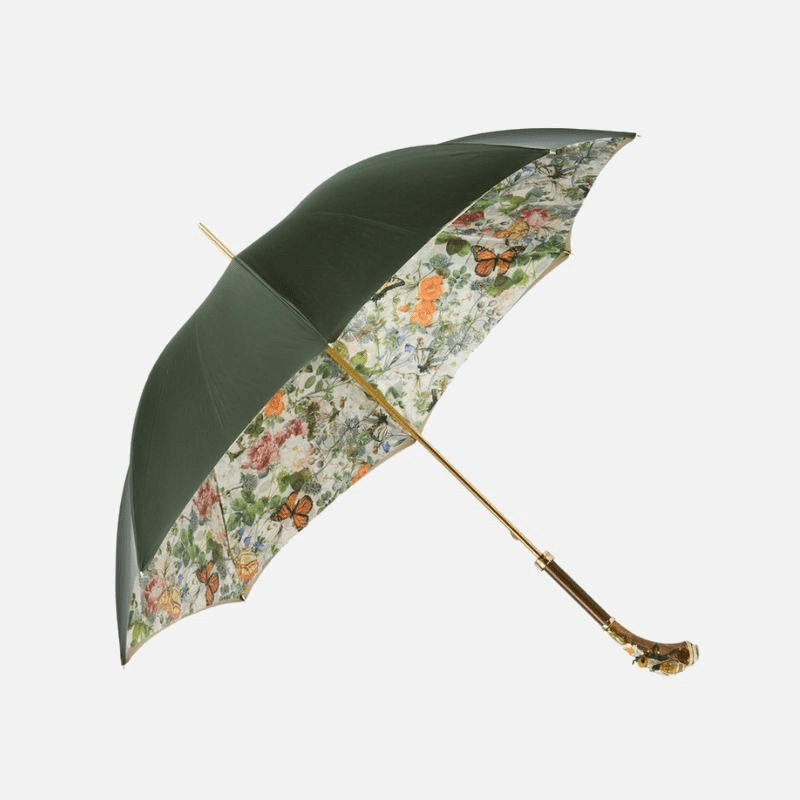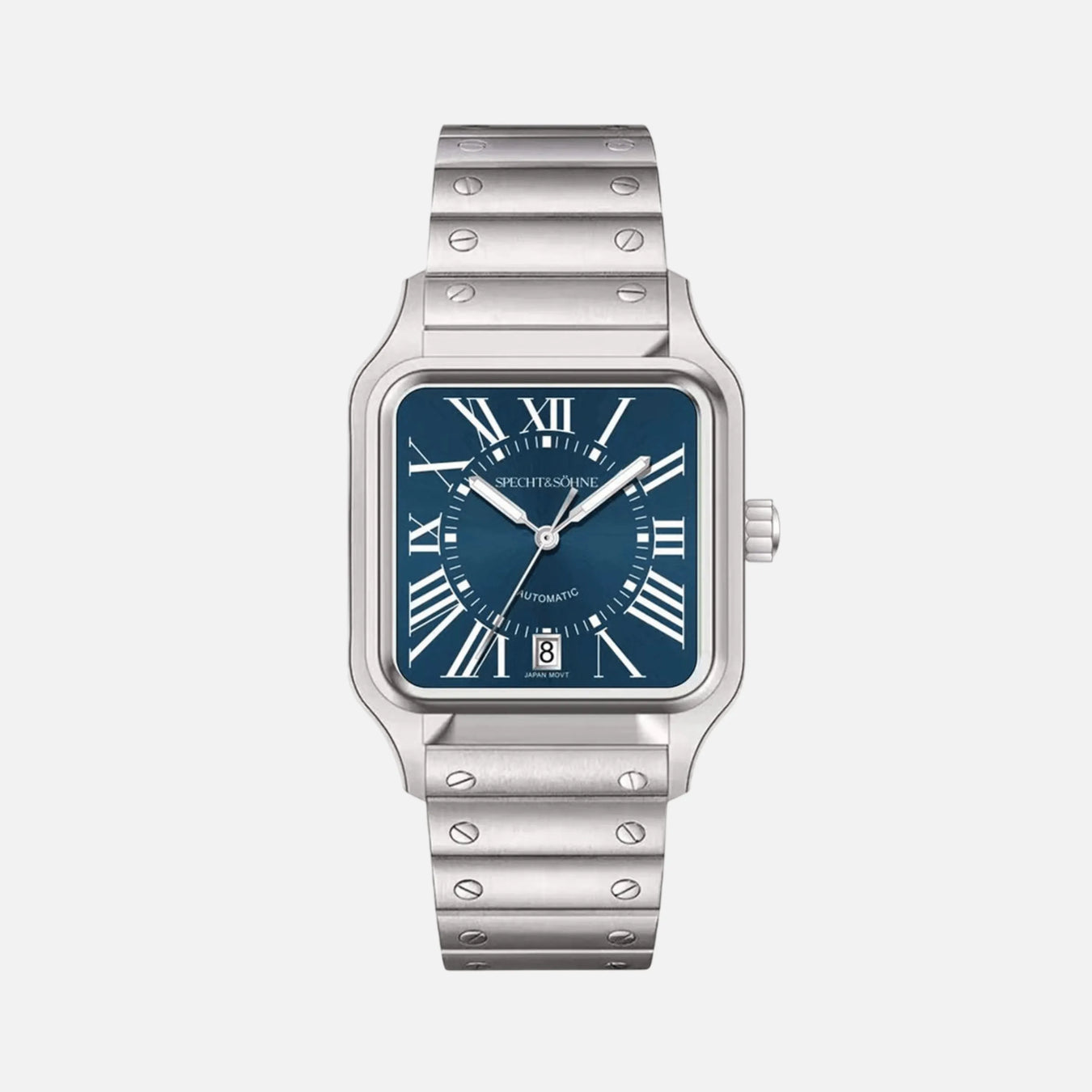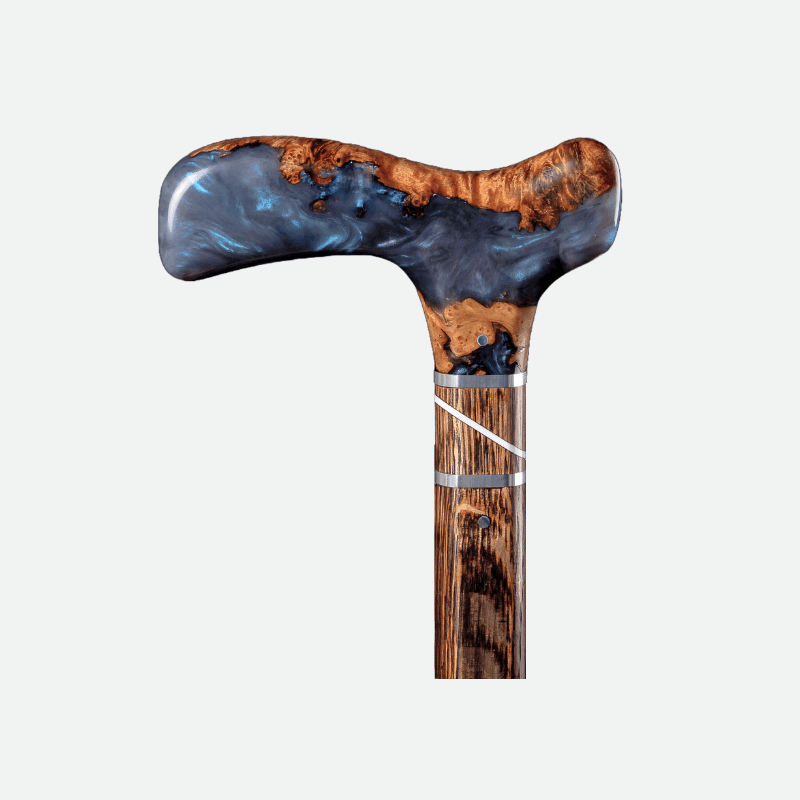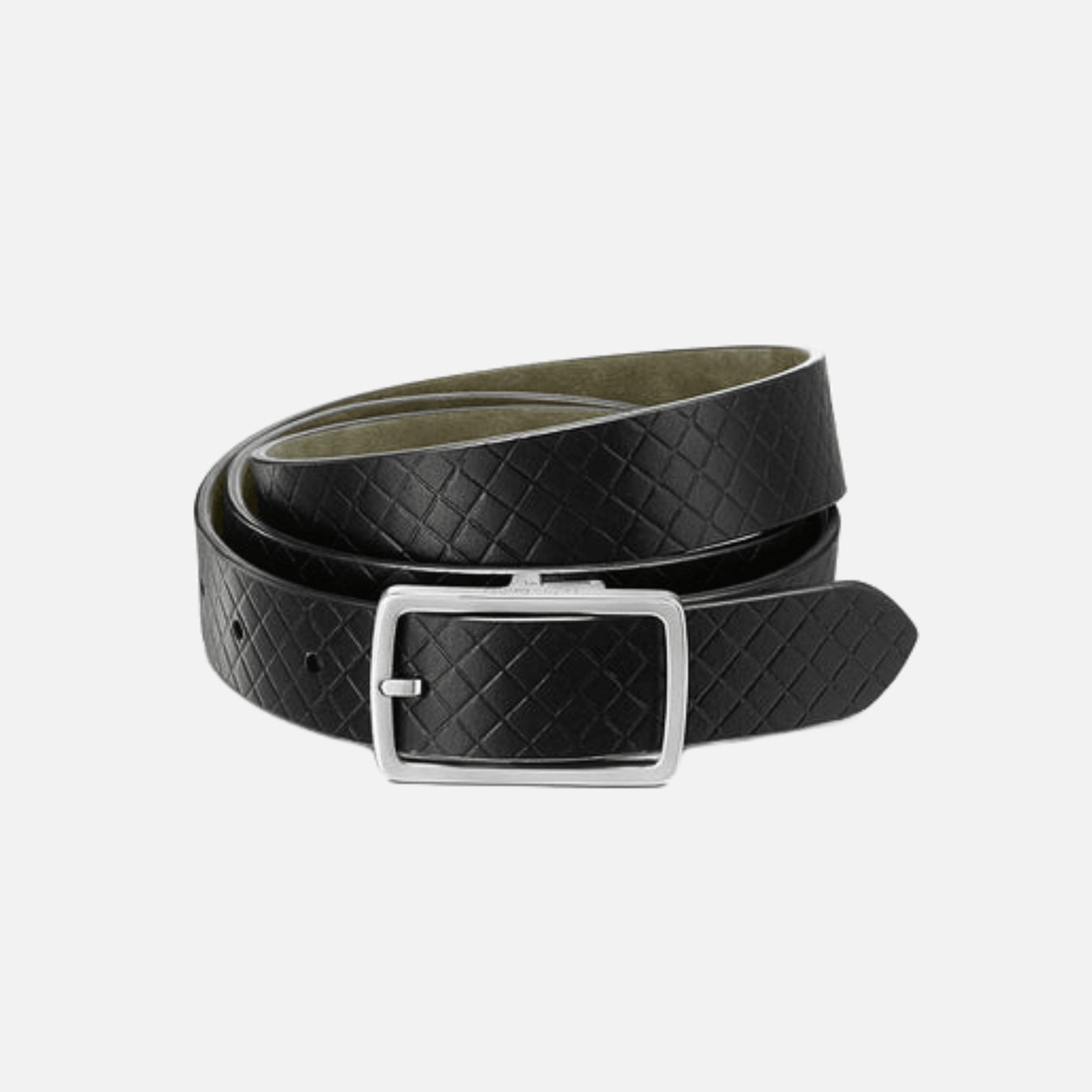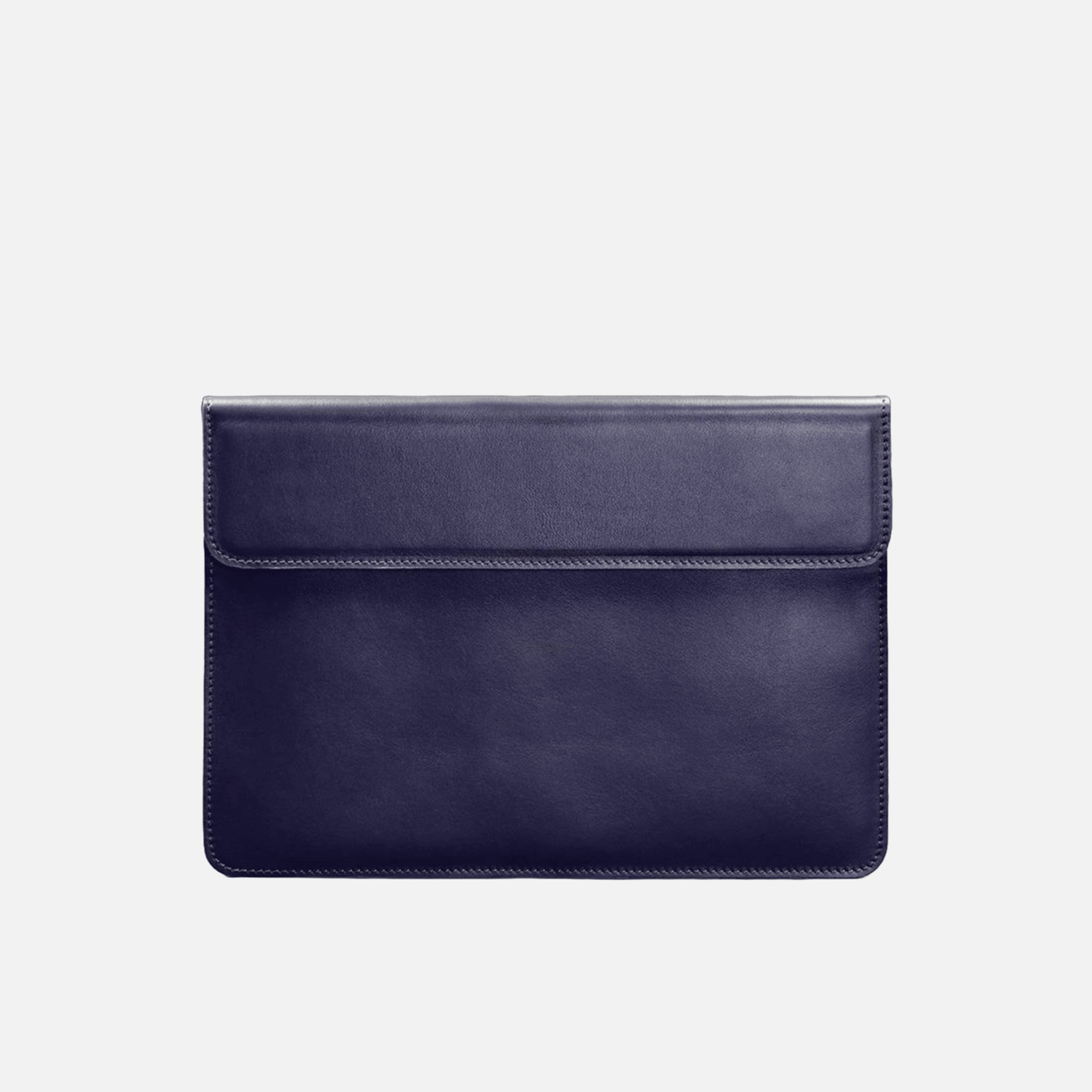Choosing the Right Walking Cane: Features to Consider
Introduction to Walking Canes: Mobility and Independence
In a world where mobility is a significant aspect of independence, walking canes have emerged as vital tools for many individuals. Walking canes not only provide support and enhance balance but also serve as an expression of personal style and elegance. Throughout history, canes have been used not just for functional purposes but also as fashion statements. In recent times, there has been a fusillade of innovation in walking cane design, blending traditional crafting methods with modern aesthetics.
Individuals searching for the perfect walking cane will find a plethora of options available, each uniquely designed to cater to various needs and preferences. From the artisan’s workshop to high-end manufacturing, canes are often handmade, bestowing them with a personal touch that mass-produced items seldom possess. Made-to-order services ensure that each cane is not a mere aid but a personalized accessory reflecting the individual’s style and requirements.
Additionally, the push for ergonomic and fashionable designs has given rise to 5 modern design trends in walking canes for enhanced mobility. These range from classic to contemporary trends in luxury walking cane design and aesthetics. As form meets function, users can find canes that provide both a secure grip and an extension of their personal flair.
When choosing a walking cane, one should consider the details such as the tip of the cane, which significantly affects mobility and safety. For instance, a cane with a 3⁄4 inch rubber tip offers a different level of traction compared to one with a 7⁄8 inch rubber tip. Understanding the necessity of such features can guide consumers in making an informed decision that aligns with their mobility needs and lifestyle.
As individuals peruse the ‘About Us’ sections and FAQs of cane providers, they learn not only about the products but also about the philosophies behind them—transforming every step with a walking cane into a stride toward autonomy.
Understanding the Types of Walking Canes
When selecting a walking cane, understanding the different types available is crucial. Walking canes not only support mobility but also reflect personal style, embodying everything from classic to contemporary design trends. Here are various types of canes to consider:
Standard Canes: Often made from wood or metal, they have a single tip at the bottom. They are suited for those who require light support and balance.
Quad Canes: These have a four-footed base, which offers greater stability than standard canes. They are ideal for those needing additional support. They often come with 3⁄4 inch or 7⁄8 inch rubber tips to accommodate different needs.
Folding Canes: Known for their portability, folding canes can be collapsed and stored easily. This type is suitable for travelers or individuals who require a cane occasionally.
Offset Canes: The handle is designed to distribute the user’s weight along the shaft, providing better balance. They are beneficial for individuals with significant weight-bearing issues.
Seat Canes: Equipped with a seat, these canes provide a convenient place to rest when needed. This type is well-suited for individuals who tire easily or may need to sit down frequently.
Fashionable Canes: Incorporating 5 modern design trends, these canes are as much a statement piece as they are a mobility aid. They can be handmade or made to order, and often align with from classic to contemporary trends in luxury walking cane design and aesthetics.
Adjustable Canes: They allow the user to modify the height of the cane for a more customized fit – this ensures maximum comfort and effectiveness.
For those interested in our specific products, detailed information about us, FAQs, and options for rubber tips for our walking stick walking canes, such as the 3⁄4 inch or 7⁄8 inch rubber tips, are available to match the exact cane type and individual preference.
Material Matters: Choosing Between Wood, Metal, and Synthetic Canes
When selecting the perfect walking cane, material is a significant consideration that contributes directly to the item’s functionality, durability, style, and weight. Individuals interested in traditional, handmade canes often gravitate towards wood—a timeless choice that offers a warm, natural aesthetic. Wooden canes are durable and can be made to order to suit personal tastes, with the flexibility to incorporate 5 modern design trends for enhanced mobility and elegance. Hardwoods like oak, cherry, and ash are commonly chosen for their sturdiness and refined appearance.
Metal canes, often crafted from aluminum or steel, are recognized for their strength and lighter weight. They offer adjustability features and are matched well with 3⁄4 inch rubber tips or 7⁄8 inch rubber tips for our walking stick canes, providing stability and comfort. Their modern designs align with contemporary trends in luxury walking cane aesthetics, offering sleek lines and an industrial vibe.
On the other hand, synthetic canes, made from materials such as carbon fiber or fiberglass, are the epitome of innovation in cane design. These canes are ultra-lightweight yet exceptionally strong, making them ideal for individuals seeking resilience without the heft. Synthetic canes often come with ergonomic handles and are paired with rubber tips designed for supreme traction and safety.
For those perusing the FAQ or About Us sections of a cane retailer’s website, it is clear that material choice is deeply personal. Whether it’s the classic elegance of wood, the robust nature of metal, or the cutting-edge features of synthetic materials, the decision should be informed by individual needs and stylistic preferences. Thus, assessing lifestyle requirements and personal taste is crucial in selecting a material that is not only practical but also visually appealing.
Ergonomics of Handle Designs: Comfort and Control
When selecting the right walking cane, one must not overlook the ergonomics of handle design—where comfort meets control. A well-crafted handle is pivotal not just for comfort during use, but also for ensuring stability and reducing the risk of hand fatigue. Frequently, handmade or made-to-order canes offer superior ergonomic features tailored to individual preferences and anatomical needs.
Handles come in various shapes, each suited to specific needs and grip styles. The traditional “crook” handle, for instance, provides a natural grip and can easily hang over a wrist or ledge when not in use. On the other hand, “Fischer” handles are shaped to match the contours of the hand, distributing weight evenly and ideal for those with arthritis or weak grips.
Innovative ergonomic designs prioritize:
- Comfort: Handles must feel natural in the user’s hand, reducing strain and pressure points.
- Grip Security: A handle design should facilitate a secure, non-slip grip, preventing slips and accidents.
- Adaptability: Individuals with varying grip strengths or hand sizes should consider adjustable or personalized options.
Additionally, the latest in walking cane technology sees a blend of classic aesthetics with modern design trends. Materials such as lightweight composites or luxurious woods, coupled with 3⁄4 inch or 7⁄8 inch rubber tips, provide a stable, yet fashionable accessory. These rubber tips are designed for our specific walking stick walking canes, ensuring a snug fit and optimal traction.
The information on our “About Us” page or in our FAQ section can guide users to ergonomic features that speak to both their functional needs and personal style. With the right handle, a luxury walking cane merges distinction with practicality, enhancing mobility with every confident step taken.
Adjustability and Flexibility: Finding the Right Height
When selecting a walking cane, one of the most critical factors to consider is the height of the cane, as it directly impacts the user’s comfort and mobility. A cane that is too tall or too short can cause posture issues, discomfort, or even increase the risk of falls. To ensure a proper fit, many walking canes now come with adjustability features.
Adjustable canes generally have a telescoping mechanism that allows the user to extend or retract the cane to the desired height, typically in increments of one inch. It is essential to choose a cane that can be adjusted to the right height for the user. The correct height can usually be determined when the user stands upright with their arms at their sides; the top of the cane should align with the user’s wrist crease. This alignment ensures that when the user holds the cane, their elbow is slightly bent at a comfortable angle.
Additionally, for those seeking canes that reflect personal style, the market includes options made to order or handmade walking canes, incorporating 5 modern design trends for enhanced mobility and aesthetics. From classic to contemporary trends in luxury walking cane design, custom canes can be as unique as the individuals who use them.
It is also important to note that walking canes often come with interchangeable tips to accommodate different surfaces and preferences. Tips are generally made of rubber and vary in size—for instance, 3⁄4 inch and 7⁄8 inch rubber tips are common for walking stick walking canes. These tips provide traction and stability, which are crucial for safe walking.
Choosing a height-adjustable cane provides the flexibility to refine its fit over time, adapting to changes in shoes, posture, or physical condition. Users should consult the FAQ or About Us section of a retailer’s website to understand the specific features and adjustability options available for their selection.
The Stability Factor: Single-point vs Quad Cane Bases
When choosing a walking cane for enhanced mobility, one crucial feature to consider is the stability factor offered by the base of the cane. There are primarily two types of cane bases: single-point and quad. The selection between these bases often hinges on the specific needs and stability requirements of the user.
Single-point canes, featuring a singular point of contact with the ground, are generally lighter and more versatile for users with minimal stability issues. They are compatible with either 3⁄4 inch or 7⁄8 inch rubber tips, which provide reliable traction. These canes are often favored for their ease of navigation in narrower spaces and offer a balance between support and mobility.
Quad canes, on the other hand, have four points of contact with the ground, forming a wider base that significantly increases stability. They are an ideal choice for individuals who require additional support to balance. However, quad canes are typically heavier than single-point canes and can be more cumbersome to maneuver, especially in tight areas. For users considering quad canes,
- Handmade options may provide personalized grip comfort.
- Made-to-order canes can adapt the base size to match the user’s stability needs.
- About Us sections often highlight the quality and customization options for such walking aids.
When deciding between single-point and quad cane bases, consider the user’s daily activities. For those who frequently traverse uneven surfaces or require additional peace of mind, a quad cane might be the preferred option. Meanwhile, active users who prefer a sleeker design with adequate support could find a single-point cane more suitable.
Moreover, keeping up with modern design trends such as 5 modern design trends in walking canes can influence the choice between a traditional look and contemporary aesthetics in luxury walking cane design. Regardless of the choice between single-point or quad cane bases, ensuring the cane is fitted with the appropriate rubber tips, like the 3⁄4 inch or 7⁄8 inch rubber tips, is essential for safety and function.
Weight Capacity: Matching Your Cane to Your Needs
When selecting a walking cane, it is imperative to consider the weight capacity of the cane to ensure safety and reliability. Individuals should look for a cane that can comfortably support their weight without risk of collapsing or bending. This is essential because a cane that cannot support the user’s weight might lead to falls and potentially serious injuries.
Most walking canes are designed to accommodate a range of weights, commonly up to 250-300 pounds. However, for individuals who require a higher weight capacity, heavy-duty models are available that can support more weight. It is advisable to check the specific weight capacity of a cane before making a purchase.
For those seeking a personalized touch or specific requirements, made-to-order canes provide a solution. These canes can be tailored to individual needs, including weight capacity, and often feature handcrafted quality. In addition, frequently asked questions (FAQ) sections on cane retailer websites can offer guidance about weight capacities and other features.
The modern design trends in walking canes not only focus on aesthetics but also on the solid construction to increase weight capacity without compromising on style. From classic to contemporary, luxury walking cane designs now incorporate both elegance and the necessary support.
Moreover, to maintain the stability and functionality of a cane, it’s important to choose the correct rubber tip size. Both ¾ inch rubber tips and 7⁄8 inch rubber tips are common for our walking stick walking canes, and selecting the appropriate size helps ensure the cane’s weight capacity is fully supported.
In conclusion, when choosing a walking cane, always consider the cane’s weight capacity in relation to your individual needs for safety and comfort. Whether browsing ‘about us’ sections for company credentials or learning from FAQs, an informed decision will lead to a more sustainable and reliable walking aid.
Safety Features: Non-slip Tips and Reflective Elements
When selecting a walking cane, safety should be at the forefront of considerations. To ensure stability and prevent falls, one must attend to the features that cater directly to these concerns. Non-slip tips, often made of rubber, are paramount. These tips come in sizes like 3⁄4 inch and 7⁄8 inch for our walking stick walking canes, promising a firm grip on a variety of surfaces. It’s vital to make certain these tips are of high quality and fit the cane properly to provide the best traction and support.
Equally important are reflective elements that increase visibility, especially during the twilight hours or in poorly lit areas. Reflective elements on a cane serve as an alert to motorists and cyclists, significantly reducing the risk of accidents. For individuals with an active lifestyle or those who venture out in the evening, reflective features provide an added layer of safety.
When considering a handmade or made-to-order walking cane, inquire about the customization options for non-slip tips and reflective accessories. Many manufacturers who detail “about us” or “FAQ” sections on their website may also cover the availability of these crucial safety features. This attention to detail reflects a commitment to user safety and aligns with 5 modern design trends in walking canes for enhanced mobility.
Furthermore, luxury walking cane designs have evolved from classic to contemporary, integrating safety without compromising on aesthetics. Reflective elements are now seamlessly incorporated into designs, ensuring that they blend with the elegance of the cane while maintaining their functional purpose.
In summary, it is essential for any prospective cane buyer to look for models equipped with non-slip tips and reflective elements, to ensure a combination of safety, function, and style.
Portability: Foldable and Collapsible Cane Options
When choosing a walking cane for enhanced mobility, the ease with which it can be transported is a vital consideration. Foldable and collapsible canes offer unparalleled convenience for those who are constantly on the go or require an assistive device that can be easily stored when not in use.
Foldable canes are designed to be disassembled into smaller parts, which can be compactly folded and placed in bags, luggage, or even large purses. These canes are often made to order or available in handmade options, ensuring that they cater to individual needs while also reflecting modern design trends. They allow users to maintain an active and independent lifestyle without the constant concern of how to carry their mobility aid.
Collapsible canes take portability a step further by using a telescopic design that enables them to be shortened and lengthened at will. This feature is particularly beneficial in environments where space is limited, such as in crowded public transport or restaurants. The convenience of being able to adjust the cane’s length on the fly also makes collapsible canes fitting for those who may experience fluctuating needs throughout the day.
It’s essential to consider the cane’s tip when looking into foldable and collapsible options. High-quality canes should be outfitted with robust rubber tips to ensure stability. Users have the option to choose between tips such as the 3⁄4 inch rubber tips or the 7⁄8 inch rubber tips for our walking stick walking canes, providing a secure grip on various terrains.
A browse through our ‘About Us’ section or our ‘FAQ’ might reveal that modern consumers favor portability and ease of use over traditional, non-collapsible walking canes. This trend reflects an evolution from classic to contemporary in the luxury walking cane market, where aesthetics must blend seamlessly with functionality. Whether for daily use or occasional assistance, foldable and collapsible canes are smart choices for users who value convenience without compromising on style or safety.
Aesthetic Considerations: Style Meets Functionality
When selecting the right walking cane, one cannot overlook the importance of aesthetics where style must coalesce seamlessly with functionality. With an array of choices available from handmade sophistication to made-to-order elegance, there is a cane for every personal style and need. Here are key style and functionality aspects to consider:
Design Trends: As the bridge between utility and fashion, walking canes are not immune to trends. Currently, 5 modern design trends in walking canes for enhanced mobility include minimalist constructions, the use of sustainable materials, incorporation of high-tech features, artist-designed patterns, and multifunctional components.
Luxury Meets Practicality: From classic to contemporary, trends in luxury walking cane design have evolved. Today’s upscale canes may feature exotic woods, precious metals, and intricate carvings, offering users a statement piece that showcases their distinct taste while addressing their mobility requirements.
Customization: Users who appreciate a tailored approach might opt for made-to-order canes. This offers a personal touch, ensuring that the height, grip, and weight of the cane are ideal for the individual’s comfort and use.
Rubber Tips for Stability: Balancing aesthetics with safety, quality canes come equipped with durable rubber tips to improve traction. For example, 3⁄4 inch and 7⁄8 inch rubber tips for our walking stick walking canes not only add to the visual appeal but ensure a stable, non-slip experience.
In the realm of walking aids, it is apparent that individuals no longer need to compromise style for stability. Innovative design intertwined with practical features means users can confidently express themselves through their choice of walking cane. Potential buyers should delve into the “About Us” section or consult a FAQ to understand the craftsmanship behind each walking stick, ensuring they find a fusion of style and functionality that suits their lifestyle and enhances their mobility.
Accessorizing Your Cane: Attachments and Add-ons
While selecting the right walking cane is paramount to mobility and comfort, elevating its functionality with attachments and add-ons can further enhance its usefulness. Individuals seeking personalized enhancements often turn to FAQ sections on websites that offer made-to-order or handmade walking aids. About Us pages may detail custom services for accessorizing your cane in accordance with modern design trends. These enhancements can range from functional to aesthetic to suit a variety of needs and preferences.
Tip Upgrades: For added stability, one may consider replacing the standard tip with a 3⁄4 inch rubber tip or a 7⁄8 inch rubber tip for their walking stick. These tips can provide better traction and absorb more shock, thereby making walking safer and more comfortable.
Cane Straps: A common add-on is the wrist strap, which prevents the cane from slipping from your grasp. Straps can be crafted from a variety of materials, often coordinating with the cane’s design for a seamless look.
Personalized Handles: Users interested in from classic to contemporary trends in luxury walking cane design may opt for custom handles. These can range from ergonomic designs tailored to the hand’s shape to ornate, artisan-crafted options that reflect the owner’s personal style.
Ice Grips: An essential attachment for those in colder climates is the ice grip or spike. This add-on can be flipped down to bite into ice and snow, reducing the risk of slips and falls.
LED Lights: For individuals requiring an extra level of safety during night-time walks, LED lights can be attached to illuminate the path ahead.
Folding and Adjustable Mechanisms: For canes that are made more portable, add-ons that allow the cane to fold or adjust in length can greatly benefit users who travel often or require different cane heights for various shoes or activities.
Incorporating add-ons can create a tailored experience that adapts to the user’s lifestyle, encapsulating the essence of 5 modern design trends in walking canes for enhanced mobility. Each accessory provides a new level of confidence and individuality to the walking cane experience.
Maintenance and Care for Your Walking Cane
The longevity and performance of a walking cane are contingent on regular maintenance and care. With a diverse range of walking canes available, from handmade, made-to-order designer items to those reflecting 5 modern design trends in walking canes for enhanced mobility, it’s crucial to adhere to a care routine to maintain their functionality and aesthetic appeal. The following guidelines can assist users in the upkeep of their walking canes:
-
Regular Inspection:
- Examine the cane for any signs of wear or damage, particularly checking the integrity of the shaft and handle.
-
Cleaning:
- Use a soft cloth to wipe the cane, removing dirt and grime. For wooden canes, consider using wood-friendly products that protect the finish.
- For metal canes, a mild detergent mixed with water can be used to clean, then thoroughly dried to prevent rusting.
-
Rubber Tips Replacement:
- Replace the rubber tips when they show signs of wear. Both 3⁄4 inch rubber tips and 7⁄8 inch rubber tips for our walking stick walking canes tips are available and should be chosen based on the cane’s diameter to ensure a snug fit and optimal support.
-
Storage:
- Store the cane in a cool, dry place to prevent warping and moisture damage.
-
Avoid Exposure:
- Keep the cane away from extreme heat or cold, as these conditions can damage both classic and contemporary luxury walking cane designs.
-
Address Repairs Promptly:
- If your cane is damaged, seek professional repair or replacement parts from the supplier.
For any uncertainties about maintenance, users should consult the “FAQ” section or reach out through the “About Us” page for care instructions specific to their walking canes. Regular care not only extends the life of a walking cane but also ensures it remains a reliable aid for mobility.
Navigating Insurance: Coverage for Mobility Aids
When selecting the right walking cane, understanding insurance coverage is essential to ensure that your choice aligns with both your physical needs and financial capabilities. Mobility aids, like walking canes, are often categorized under durable medical equipment (DME) in most insurance policies, including Medicare and private insurance plans.
For those requiring a walking cane, it is prudent to:
Verify Insurance Coverage: Contact your insurance provider to determine if walking canes are covered under your specific plan. Inquire about the process to qualify for coverage, which may include a prescription from a healthcare provider.
Understand Coverage Limits: Insurance plans may have limits on how often they will cover the cost of a new mobility aid or restrict coverage to certain types of canes. Some may only cover standard models, potentially excluding made-to-order or handmade options.
Review Preferred Providers: Some insurance plans have preferred vendors or in-network providers. Purchasing a walking cane from these sources may reduce out-of-pocket expenses.
Consider Medicare Guidelines: For Medicare beneficiaries, Part B may cover walking canes as DME if prescribed by a physician for use in the home. The cane must be deemed medically necessary and purchased from a Medicare-approved supplier.
Explore Rubber Tip Coverage: Medicare and some private insurers may also cover replacements for consumable parts of the cane, such as 3⁄4 inch or 7⁄8 inch rubber tips, which are vital for safety and comfort.
Upon confirming insurance coverage, exploring the latest trends and features in walking canes can be next. Whether one is keen on traditional designs or looking at 5 modern design trends in walking canes for enhanced mobility, or from classic to contemporary trends in luxury walking cane design and aesthetics, being well-informed about various options can greatly assist in making the right purchase.
For additional queries, consider reaching out to the customer service department of the cane provider, who might have an FAQ or ‘About Us’ section on their website detailing support with insurance questions. With due diligence, users can find a walking cane that not only supports their ambulatory needs but also aligns financially with insurance benefits.
Selecting a Walking Cane for Specific Health Conditions
When choosing a walking cane for specific health conditions, it is essential to consider how certain features align with the individual’s needs. Here are some key considerations for various health conditions:
Arthritis
Those with arthritis require a cane with an ergonomic handle to reduce stress on the joints. A gel grip or foam handle may provide the necessary cushioning.
Balance Issues
A broader base, such as a quad cane, offers more stability for individuals with balance problems. Rubber tips of adequate size, such as 3⁄4 inch or 7⁄8 inch, ensure better grip and safety.
Post-surgery Recovery
For individuals recovering from surgery, an adjustable cane allows for height modification as the rehabilitation progresses. A lightweight, yet sturdy material, like aluminum, can be beneficial here.
Neurological Conditions
Users with neurological conditions, such as Parkinson’s, may require a cane with a swan neck design that aligns the user’s weight over the shaft for improved balance.
Visual Impairment
Canes for those with visual impairments should have high-visibility markings. Some models incorporate features like reflective strips for enhanced safety.
Obesity
A heavy-duty cane with a stronger and thicker shaft can support a larger amount of weight. Ensure that the cane is made to order to accommodate individual requirements.
FAQs
What handle type is best for arthritis sufferers? Ergonomic handles with cushioning are best for arthritis sufferers.
Can I customize the height of my cane if I am recovering from surgery? Yes, adjustable canes are available for this purpose.
For more information about walking cane options tailored to specific health conditions, or to explore 5 modern design trends in walking canes for enhanced mobility and from classic to contemporary trends in luxury walking cane design and aesthetics, prospective buyers are encouraged to visit the ‘About Us’ or ‘FAQ’ sections on makers’ websites to learn about handmade and made-to-order walking cane options.
Making the Decision: Where to Purchase Your Walking Cane
Choosing where to purchase a walking cane is as critical as selecting the cane itself. The source can influence the quality, variety, and even the opportunities for customization of the cane. Buyers should consider multiple venues from specialized health care stores, online marketplaces, to artisans who produce handmade walking canes.
Health Care Stores: A visit to a local health care store often provides the advantage of trying out different canes and getting professional advice. Frequently asked questions (FAQ) about walking canes can be addressed promptly.
Online Marketplaces: Online retailers offer a wide range of walking canes, from functional to luxury designs. One can find information about the latest 5 modern design trends in walking canes for enhanced mobility. Online stores often have detailed product descriptions and customer reviews which can be helpful.
Custom Cane Makers: For those desiring a personalized touch, made to order or handmade walking canes are an excellent option. These canes can be crafted to meet individual needs and aesthetic preferences, from classic to contemporary trends in luxury walking cane design and aesthetics.
When making a purchase, it is also essential to consider the product support available, such as availability of 3⁄4 inch or 7⁄8 inch rubber tips for walking stick walking canes. Quality after-sales service ensures that customers can maintain their canes in top condition. For more information about cane features, services, and the company’s commitment to excellence, buyers can visit the “About Us” section of a cane maker’s website.
Choosing the right vendor for a walking cane is integral to ensuring that the user receives a product that truly enhances their mobility and suits their lifestyle.
Conclusion: Embracing Mobility with the Right Cane Choice
Selecting the ideal walking cane is an important decision in maintaining and enhancing one’s mobility. With numerous options available, individuals can enjoy the freedom that comes with finding a cane that suits their unique needs. The journey to finding the perfect walking stick often begins with understanding the available features, ranging from 5 modern design trends in walking canes for enhanced mobility to the practicality of interchangeable 3⁄4 inch rubber tips for our walking stick walking canes tips.
When considering a cane, it’s not just about support but also about style and expressing one’s personality. From classic to contemporary, there has been a significant shift in luxury walking cane design and aesthetics. The market now offers a plethora of choices that cater to everyone, whether one prefers a timeless look or a sleek, modern appeal. Handmade canes often deliver an exceptional level of craftsmanship that reflects individuality and grace.
Customization plays a crucial role for many, as made-to-order canes are tailored to meet specific preferences in height, style, and functionality. Adjustability is also a vital feature, so look for canes that can adapt to your walking surfaces with interchangeable tips such as the 7⁄8 inch rubber tips for our walking stick walking canes tips.
When browsing the FAQs or the ‘About Us’ sections of cane providers’ websites, prospective buyers can gather valuable insights on product variances and company ethos — information that can guide them towards making an informed purchase.
Ultimately, finding the right cane is an empowering step towards independence and self-reliance. It’s about taking control of one’s mobility, with grace and confidence, knowing that the selected cane is not just a support tool but a companion in life’s journey.

